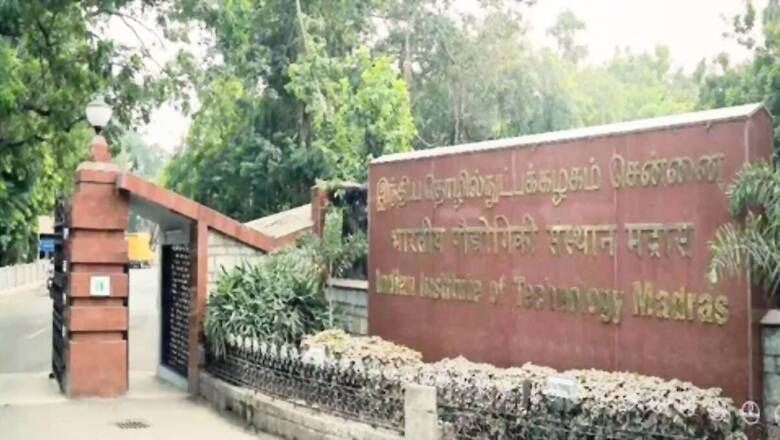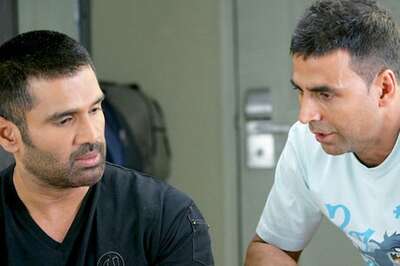
views
The Indian Institute of Technology (IIT)-Madras continued to be on the top position ‘overall’ in the National Institutional Ranking Framework (NIRF) 2024 released by the union Ministry of Education (MoE) on Monday.
According to the rankings, IIT-Madras has retained the top position for the sixth consecutive year this time in the ‘overall’ category and in the ‘engineering’ category for the ninth year in a row.
Indian Institute of Science (IISc), Bengaluru has been ranked the top university in the country yet again this year.
The IITs featured in the top 10 of most categories. IIT-Bombay stood the third position in the ‘overall’ category, followed by IIT-Delhi, IIT-Kanpur and IIT-Kharagpur. The All India Institute of Medical Sciences (AIIMS) was ranked seventh in this aspect. IIT-Delhi was also ranked the second-best institute in the ‘engineering’ category, third in the ‘research’ category and fourth in the top five management institutes in India. IIT-Bombay was ranked first in the ‘innovation’ category, up from seventh last year. “The institute’s students, faculty and staff has made this possible,” said Prof Shireesh Kedare, director, IIT-Bombay.
In a significant move in the ‘colleges’ category, Hindu College, Delhi University made it to the top this year replacing Miranda House, which had been on the top position for the last seven years.
The Indian Institute of Management (IIM)- Ahmedabad topped the ‘management’ category retaining its first position for the fifth consecutive year.
WHAT’s NEW
This year, three new categories have been added to the rankings —- Open Universities, Skill Universities and state-funded public universities.
Also, this year the evaluation criteria has been modified in terms of faculty -student ratio. The ratio has been changed to 1:10 from 1:5 in medical institutes; and 1:20 from 1:15 in state government universities.
This was the ninth edition of the NIRF rankings. Last year, there were 13 categories. NIRF rankings were launched in 2015 with the first such report being released in 2016 with just four categories.
EXPERTSPEAK
Prof Anil Sahasrabudhe, chairperson, National Board of Accreditation (NBA), said that this year they have added a few Sustainable Development Goals (SDGs) such as Net Zero Carbon in an institution’s functioning. “We are working on adding ‘Sustainability’ as a parameter in the rankings framework from the next year,” he said.
Releasing the rankings report, union education minister Dharmendra Pradhan said that knowing the quality, performance and strengths of an academic institution is the right of students and parents and hence, all the 58,000 higher education institutions across the country must come under the ranking and rating framework. “Improving employability skills is a priority area for us, which enables to map future jobs for students. Our ranking mechanism must also include skilling as a parameter. We should devise mechanisms to bring intangible aspects of education in the rankings framework,” said Pradhan while addressing the gathering at Bharat Mandapam, ITPO Complex, where the launch event was held.
Highlighting some of the gaps that institutions often lack in, Sanjay Murthy, secretary, higher education, MoE, said that the two such areas are —- not having proper collaborations; and the ability to sustain research projects.
“These gaps emerged during a presentation made by a faculty member from IIT-Madras during a recent workshop we organised on how to achieve better rankings for institutions. These two are important areas for improvement,” said Murthy.
The NIRF rankings are based on evaluating institutions on five broad parameters —- teaching-learning; research and professional practice; graduation outcome; outreach and inclusivity; and perception. These five parameters have 18 sub-parameters across categories.
Increase in number of applications since 2016
A total of 6,517 institutions offered to be ranked this year. In all, 10,845 applications for ranking were made by these 6,517 unique institutions under various categories / domains including 2,781 in Overall Category, 1,463 in Engineering, and 3,371 in General Degree Colleges.
The number of applicants increased from 2,426 in 2016 to 6,517 in 2024 whereas total number of applications for ranking in various categories have increased from 3,565 in 2016, to 10,845 in 2024 i.e. total increase of 4091 (168.63% increase) in number of institutions and 7,280 (204.21% increase) in total number of applicants.
“A noticeable increase in the number of applicants shows the recognition for the Indian rankings amongst higher education institutions,” the minister said.



















Comments
0 comment